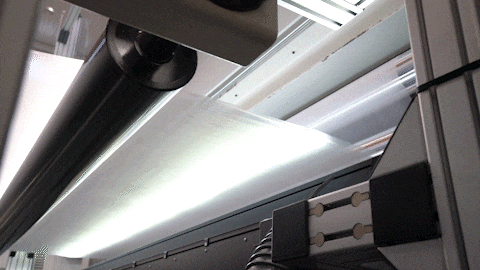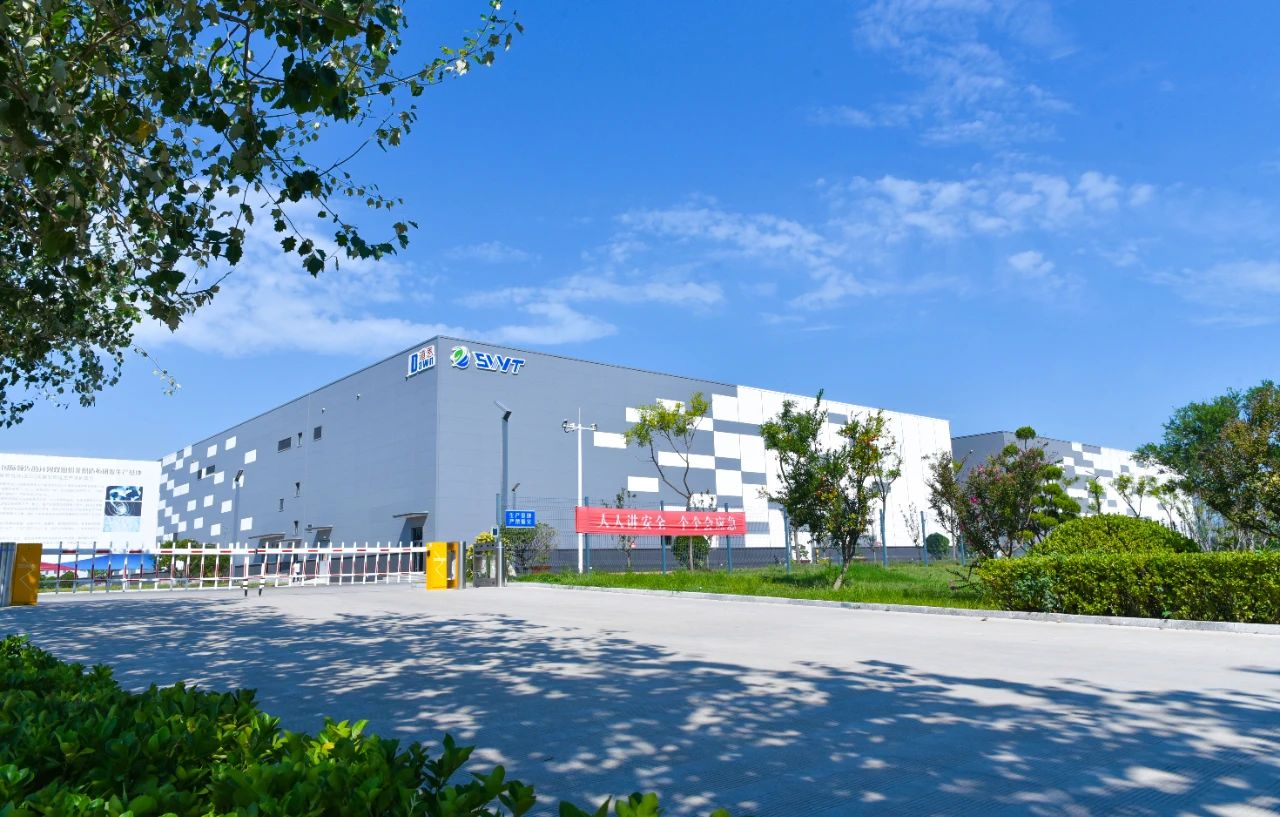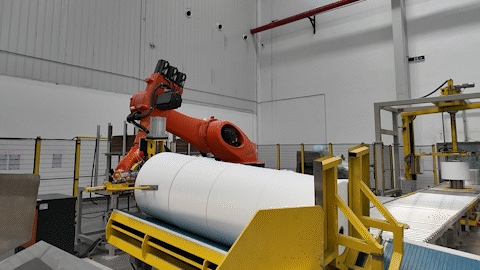"Break the foreign monopoly and elevate China's non-woven fabrics to a high-end level!" A few days ago, Zou Binghuan, General Manager of Shandong Dawn-SWT Technology Co., Ltd. (referred to as Dawn-SWT), expressed this ambition in an interview with the Dazhong Daily. In mid-May, at the CIDPEX2024 held in Nanjing, several core products from Dawn SWT, including 17g 3D aqua cotton plus, 13g white aqua cotton HO non-woven fabrics gained popularity during the exhibition, attracting over 200 Chinese and international customers.
Founded in 2016, Dawn-SWT has been dedicated to developing unique parallel bi-component non-woven fabric production technology and comprehensive solutions. It has launched the first parallel bi-component non-woven fabric production line in China, providing unique high-performance products for hygiene and medical non-woven fabric users. Over the years, Dawn SWT has consistently pursued innovation and excellence, and steadily progressed towards becoming the "Softness Expert in Non-Woven Fabrics."
Aqua Cotton, A Unique Parallel Bi-component Non-woven Fabric
According to reports, Dawn-SWT's aqua cotton series of non-woven fabrics utilize a parallel bi-component fiber spunbond production line designed and manufactured in collaboration with Qingdao University. These fabrics are made from specially modified parallel bi-component spunbond raw materials through a continuous filament spinning process.
"Both the production line and the raw materials incorporate several of our core technologies," said Shen Zhangfei, Vice Chairman of Dawn-SWT, in an interview with International Nonwovens Industry Magazine. He mentioned that the first Chinese 3S flexible bi-component spunbond non-woven production line integrates several advanced technologies, including panel-type melt flexible distribution, high-throughput multi-gradient drawing systems, and multi-layer composite, fluffy, 3D stereo, and soft non-woven fabric forming techniques. This allows for controlled crimping of bicomponent fibers during the spinning process and the high-speed, stable production of fine denier bi-component non-woven materials. "Our independently developed modified special raw materials for bi-component spunbond fabric have changed the interfacial polarity of the materials, achieving more fluffy and stable product performance."
Now, the mainstream materials in the sanitary market are hot air and traditional spunbond non-woven fabrics. Hot air non-woven fabrics, made from short fibers, pose a potential irritation risk to the delicate skin of infants. Dawn SWT's existing and newly commissioned production lines focus on producing products that serve as alternatives to hot air nonwovens. Vice Chairman Shen Zhangfei stated, "Our aqua cotton series non-woven fabrics use continuous fine-denier filament fibers. After hot rolling and fiber web formation, the materials undergo hydroentanglement treatment, significantly enhancing its fluffiness and texture, and effectively avoiding the issue of fiber ends irritating the skin."
"Continuous filament fibers do not shed and do not have fiber heads that could potentially irritate the skin. They have high fluffiness and water absorption rates, making them more dry, breathable, cottony, soft, and very friendly to infants and young children, while also ensuring high production efficiency," said General Manager Zou Binghuan.

The 17g 3D aqua cotton plus parallel bi-component non-woven fabric, showcased at the Nanjing CIDPEX2024, is a new product developed by Dawn-SWT that boasts excellent skin-friendliness. This "zero irritation" product features a more uniform fabric surface and small spiral fiber curl, which maintain fluffiness, softness, and breathability while reducing weight. It offers a delicate, skin-friendly softness and excellent mechanical properties, making it widely used for back sheets, waistbands, and other applications. Another new product, the 13g aqua cotton white HO non-woven fabric, exhibits large spiral fiber curl, providing a fluffy, breathable, and soft texture that delivers an extremely comfortable experience for customers.
Hygiene products are a significant market for Dawn-SWT, with their goal being to replace hot air non-woven fabrics for the inner and outer waistbands of pull-up pants. "This material does not affect the heat bonding or ultrasonic bonding of the waistband sides. Additionally, the top layers of diapers in the current market are predominantly made from hot air non-woven fabrics, which means that they often use fine-denier fibers with poor dryness. If coarse-denier hot air non-woven fabrics are used instead, the dryness of the diapers can be improved, but the issue of fiber head irritation becomes significant," said Vice Chairman Shen Zhangfei. "This property is not only applicable to hygiene products but also perfectly suitable for the wiping field."
Nonwovens are Not Just for Hygiene Application
High-end geotextiles are a key business direction for Dawn-SWT. "Now, the common geotextiles in the market are made of PET and PP materials. PET has high strength but is not resistant to acids and alkalis, while PP is resistant to acids and alkalis but has lower strength," said General Manager Zou Binghuan. The company has developed a targeted solution: the outer layer is made of PP for acid and alkali resistance, while the core layer is made of PET to provide strength support. Combined with thermal bonding and needle punching processes, this product is highly suitable for use as high-end geotextiles and high-end waterproof membranes.

Another promising application area is filtration support materials. These materials are composed of multiple layers, which need to be laminated with meltblown or other fibers using methods such as ultrasonic bonding or hot air bonding. PET materials have a high melting point, which requires higher temperatures for hot air bonding, presenting challenges when laminating with other materials. Vice Chairman Shen Zhangfei stated, "We utilize a bicomponent structure, using PET for support and low-melting-point materials like PP for the outer layer. This makes the material suitable for both ultrasonic and hot air bonding."
Joining Dawn and Taking the Fast Lane to Develop
Joining Dawn Group was a milestone for Dawn SWT, bringing multiple advantages such as funding and resources, and propelling the company onto the fast track of high-quality development. Vice Chairman Shen Zhangfei recalled, "Initially, we had only one production line with an annual output value of over CNY 80 million." In the past two years, Dawn-SWT has added two production lines annually, with each new line generating an annual output value of over CNY 150 million. Now, the company has a total of five production lines, with a production capacity exceeding 30,000 tons.

Dawn's brand influence has provided a solid backing for SWT's capacity growth. After the commissioning and optimization of new production lines, they quickly reached full production capacity and maintained steady operation even during the off-season. Their main partners include numerous well-known domestic brands, and they are actively engaging with international brands as well.
As the largest Chinese supplier of polypropylene meltblown materials, Dawn Group's subsidiary, Dawn Polymer, holds a significant advantage in the high-end spunbond industry. It has invested in and built the largest single-unit capacity for biodegradable (PBAT) synthesis production in China, and successfully developed degradable PBAT, PPS, and other modified materials. "After joining Dawn, we have synergized with our sister companies, leveraging complementary strengths and integration across the industrial chain. Our sister companies develop and produce new raw materials based on our performance targets, which we then process and validate on our non-woven fabric production lines. This iterative process will be continued until successful production is achieved," said Vice Chairman Shen Zhangfei.
The extensive platform and abundant talent pool of Dawn Group provide substantial support for Dawn SWT's R&D efforts. "Polymer material experts help us with more targeted material modifications. With Dawn Group's support, we have significantly improved in product quality, pricing, and communication timeliness," explained Vice Chairman Shen Zhangfei. More importantly, Dawn-SWT can also share Dawn Group's customer channels and export resources when needed, enhancing their synergy and collaborative capabilities.
Accumulate Momentum and Move towards the Forefront of Innovation
In the past two years, the Chinese non-woven fabric industry and downstream hygiene products market have experienced significant polarization. "In this context, despite doubling our capacity and maintaining prices that are CNY 1000 to 2000 higher per ton, we have still managed to avoid the usual seasonal downturns. The key to our success lies in mastering core technologies and pursuing a path of product differentiation and high cost-effectiveness," said Vice Chairman Shen Zhangfei.
Currently, Dawn SWT has successfully developed and reserved a variety of unique innovative products and technologies, such as degradable material technology. It is also conducting experiments on some matte anaerobic degradable materials. General Manager Zou Binghuan stated, "Our degradable materials have been certified, and we have begun providing samples and corresponding quotes to customers. However, since the current material costs are higher than conventional products, we are making every effort to reduce costs."
General Manager Zou Binghuan said, "Considering the considerable transportation costs of shipping materials from Yantai, Shandong to southern provinces, we plan to invest in building production bases in areas where downstream customers are concentrated, such as Jiangsu, Zhejiang, and Fujian. We believe that as demand grows and capacity increases, there will be further room for cost reduction." Meanwhile, Dawn-SWT is actively expanding into new application markets and upgrading production lines to develop finer fibers, thereby enhancing product performance and competitiveness.

Through in-depth and detailed market research, Dawn-SWT has identified some key development areas, which are currently in the research and development phase. According to reports, it is expected that in the third quarter of this year, Dawn-SWT will launch long-fiber fine-denier bi-component PP non-woven materials for diaper topsheets, replacing hot air non-wovens. "Many customers are also looking forward to the launch of this product," Vice Chairman Shen Zhangfei said.
After years of hard work, the future looks promising. "We have been working on bi-component spunbond materials for several years, and we expect this type of material to become an important direction for the upgrade of spunbond non-woven fabrics in the future," Vice Chairman Shen Zhangfei said. It is difficult for traditional single-component materials to produce differentiated products, whereas bi-component materials, through combinations of different raw materials and cross-sections, can generate different effects and properties to meet the diverse needs of various application fields. "We have mastered the core technology across the entire process from materials to equipment, processes, and applications, enabling us to provide customers with one-stop services to meet their diverse needs for the application of non-woven fabric materials," he said.